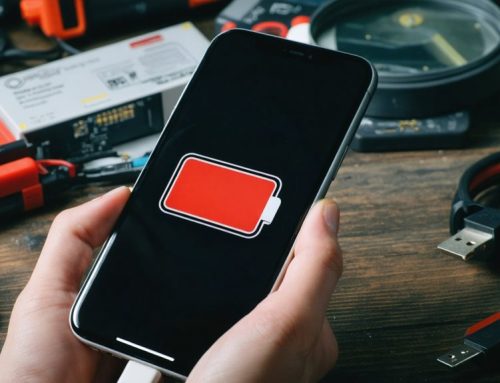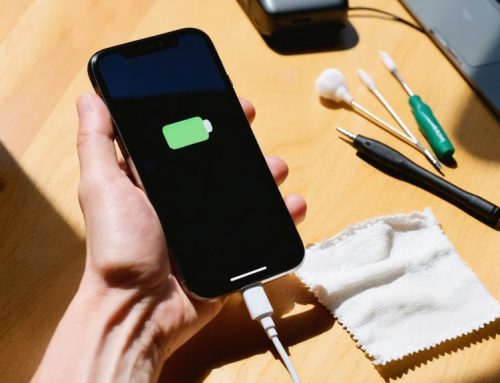Transform your smartphone as hub for smart home and take full control of your connected devices with ease. By leveraging powerful apps like Google Home, Amazon Alexa, and Apple HomeKit, you can seamlessly manage smart lighting, security cameras, thermostats, and more, all from the palm of your hand. A well-optimized home network is essential for a smooth experience, ensuring that your smart devices remain responsive and reliable. Utilize a dual-band Wi-Fi setup, with the 2.4 GHz band for extended range and 5 GHz for faster data speeds. Setting up and organizing your smart home devices is easier than ever, thanks to user-friendly apps that allow QR code scanning or manual input of serial numbers. Strengthen security by using strong passwords, enabling two-factor authentication, and installing antivirus software on your smartphone. Keeping your system up to date with regular firmware and software updates ensures optimal performance. With the right setup and troubleshooting strategies in place, your smartphone as hub for smart home can provide unmatched convenience, security, and efficiency making daily life smarter and more connected than ever before.

Choosing the Right Smart Home Ecosystem for Your Smartphone Hub
Setting up your smartphone as hub for smart home starts with selecting the right ecosystem. The three most popular platforms—Google Home, Amazon Alexa, and Apple HomeKit—offer different advantages based on your preferences and existing devices. Google Home provides seamless integration with Google services and powerful voice control. Amazon Alexa boasts the widest range of compatible smart home products, making it a flexible choice. Apple HomeKit, designed for iPhone users, prioritizes security and privacy while ensuring high-quality automation. Additionally, emerging technologies like Matter aim to unify smart home compatibility across brands, making setup easier. Privacy-focused alternatives like Home Assistant and Samsung SmartThings provide further options for those who want more control over data security. By choosing the right platform, you ensure that your smartphone operates as an efficient hub, streamlining device management while enhancing automation in your smart home.

Connectivity Requirements: Optimizing Your Smartphone as Hub for Smart Home
For your smartphone as hub for smart home to function smoothly, a strong and stable network connection is essential. Your Wi-Fi setup plays a crucial role in ensuring that all smart devices communicate efficiently. The 2.4 GHz band is ideal for wider coverage and better penetration through walls, while the 5 GHz band provides faster speeds for high-performance devices. Upgrading to Wi-Fi 6E can significantly reduce network congestion, especially if you have multiple smart home gadgets running simultaneously.
Aside from Wi-Fi, additional connectivity protocols like Thread, Zigbee, and Z-Wave can enhance your smart home’s efficiency. These low-power networks allow smart devices to communicate without overloading your Wi-Fi, ensuring stable performance. Proper router placement and network optimization prevent connectivity issues, allowing your smartphone as hub for smart home to control all devices seamlessly. By investing in a reliable internet setup, you’ll experience fewer disruptions and maximize the potential of your connected home.

Device Setup and Management
Setting up and managing smart home devices can feel overwhelming, but with the right approach, your smartphone as hub for smart home makes the process seamless. Begin by downloading the corresponding app for each smart device whether it’s Google Home, Apple HomeKit, or Amazon Alexa. These apps provide a centralized platform for device integration. Most smart gadgets come with QR codes or serial numbers that you can scan to link them to your smartphone effortlessly.
Once connected, organize your devices into specific “rooms” within the app. This structured arrangement helps with easy access and automation. For example, you can set up routines such as turning off all lights at bedtime or adjusting the thermostat before you arrive home. Leveraging automation through your smartphone as hub for smart home ensures a personalized, hands-free experience.
To maintain peak performance, always update your smart devices and control apps regularly. Firmware updates not only introduce new features but also fix security vulnerabilities. By managing devices efficiently and keeping them updated, your smartphone as hub for smart home will streamline your daily life while enhancing both convenience and security.

Protecting Your Smart Home with Your Smartphone as Hub
While using your smartphone as hub for smart home simplifies device control, it also raises important security and privacy concerns. Your smart devices, from cameras to voice assistants, are connected to the internet, making them potential targets for cyber threats. To safeguard your network, start by securing your smartphone and smart home apps with strong passwords and two-factor authentication (2FA). Enabling 2FA ensures that only you can access your smart home controls, even if someone tries to breach your account.
Another crucial step is installing antivirus software and a virtual private network (VPN) on your smartphone as hub for smart home setup. A VPN encrypts your data, preventing hackers from intercepting sensitive information. Additionally, always update your smart devices, smartphone apps, and Wi-Fi router firmware to patch security vulnerabilities that could be exploited.
Reviewing privacy policies is also essential. Many smart home devices collect data, so it’s important to understand how your information is used. Opt for devices with strong encryption protocols and the ability to adjust privacy settings. Disabling unnecessary data collection helps minimize security risks.
Finally, protect your home network by setting up a separate Wi-Fi network exclusively for smart home devices. This way, even if a device is compromised, your personal data remains safe. By implementing these security measures, your smartphone as hub for smart home will offer both convenience and robust protection, ensuring a safe, smart living environment.

Troubleshooting Guide
Managing a smartphone as hub for smart home setup can sometimes come with challenges, but with the right troubleshooting steps, you can quickly resolve common issues. If a smart device isn’t responding, start by ensuring your smartphone is connected to the correct 2.4 GHz or 5 GHz Wi-Fi band. Many smart home devices operate best on 2.4 GHz for extended range, while 5 GHz is ideal for faster speeds.
If a device becomes unresponsive, restart your smartphone and the affected smart device. Simply turning them off and on can refresh the connection. Additionally, check for firmware updates in your smartphone as hub for smart home apps, as outdated software can cause compatibility issues. Keeping your smart home ecosystem updated ensures smoother performance and prevents security vulnerabilities. When a device isn’t being recognized by your smartphone, verify that it’s powered on and within the network range. If connectivity issues persist, reset the device and re-add it to your smart home app. Checking the device manufacturer’s support page or community forums can also provide specific solutions tailored to your setup.
To further optimize performance, ensure that your home’s Wi-Fi router is placed in an optimal location, centralized and free from obstructions. If you experience frequent disconnections, consider upgrading to Wi-Fi 6 or adding a mesh network to enhance coverage. By following these troubleshooting steps, you can maintain a seamless smartphone as hub for smart home experience, keeping all your smart devices connected and fully functional.
Final Thoughts
By fully utilizing your smartphone as hub for smart home, you can streamline device management, improve automation, and ensure optimal security for your connected ecosystem. Your smartphone serves as the central command center, allowing you to control lighting, security cameras, smart thermostats, and other IoT devices with ease. With proper setup, a reliable home network, and smart integrations, your smartphone as hub for smart home can transform your daily routine, offering convenience and efficiency. Ensuring your Wi-Fi is optimized, regularly updating device firmware, and implementing strong security measures are essential for maintaining a seamless smart home experience. Even if you encounter issues, following troubleshooting steps and utilizing support resources can help keep your system running smoothly. Whether you’re adjusting settings remotely, automating household tasks, or enhancing security, your smartphone provides unparalleled control over your smart home. Embrace the power of smart technology and take full advantage of your smartphone as hub for smart home because the future of home automation is right at your fingertips!






